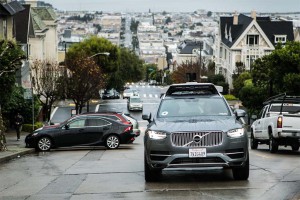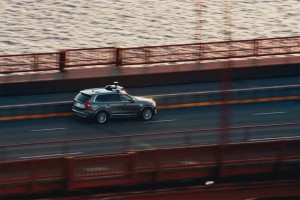
A new study suggests ride-hailing services, like Uber and Lyft, increased traffic delays in San Francisco by 62%.
Early in their growth, ride-hailing services, like Uber and Lyft, were seen as potential replacements for new vehicles; however, a new study suggests they only add to the number of vehicles on the road.
According to the new study, traffic delays in San Francisco – the test city in the study – during weekdays jumped 62% from 2010 to 2016, which is after transportation network companies, i.e. ride-hailing companies, began to offer services in the city.
Researchers from the University of Kentucky and the San Francisco County Transportation Authority conducted the study using data from ride-hailing companies and Inrix Inc., a traffic-mapping and connected-car services supplier.
Without the influx of companies like Uber, Lyft and others, traffic would have grown by 22% during this period, according to the study. Average vehicle speeds in San Francisco fell more than 4 mph to about 22 mph from 2010 to 2016.
(Uber stock keeps falling after stumbling out of the gate. Click Here for the story.)

Ride-hailing services often compete with mass transit, putting more vehicles on the road and adding to traffic congestion.
While there are other contributing factors in the rise in traffic delays such as mass transit usage, employment and population growth. For example, the population increased by 9% over the study period, while employment soared by 29%, but the study claims the biggest factor is the rise of TNCs.
In 2016, TNCs accounted for 15% of all intra-San Francisco vehicle trips, 12 times as many made by traditional taxis. Car ownership in the city increased slightly, growing from 1.08 vehicles per household in 2010 to 1.1 in 2016. Rail ridership grew substantially, but bus ridership slipped.
(Click Here for details about Lyft’s IPO depending on an autonomous future.)
TNC-induced traffic delays are the result of several things, including “deadhead” miles — waiting for and traveling to pick up passengers or returning empty — and greater congestion at pick-up/drop-off areas. Deadheading accounts for as much as 20% of a ride-hailing vehicle’s miles in San Francisco.
If ride-hailing hadn’t existed, the study estimates, more than 40% of trips either wouldn’t have been made at all, or users would have walked or biked to their destination. However, the study doesn’t account for multi-passenger trips, which it notes can account for as much as 20% of ride-hailing trips.
(To check out more about Waymo’s plans to build driverless vehicles in Detroit, Click Here.)
Ride-hailing services also could increase the use of some mass transit systems by providing first-mile/last-mile to local stations, according to the study. The authors also speculate that TNCs could eventually reduce vehicle ownership rates and, in turn, reduce overall vehicle miles traveled.
